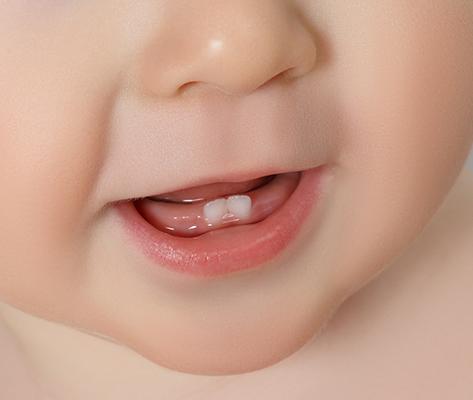Welcoming a new baby into the world brings countless joys and discoveries, one of which is the fascinating development of their little teeth. As your child grows, you’ll likely notice a unique feature among their emerging pearly whites—the V shape of their bottom teeth. This characteristic might raise questions for parents and caregivers alike, sparking curiosity about what it means for oral health and development.
In this article, we’ll explore the significance of the V-shaped arrangement of baby bottom teeth, what to expect during this stage of teething, and practical tips to ensure your little one maintains a healthy smile as they grow. Join us as we delve into the wonderful world of baby teeth and empower you with the knowledge you need to navigate this exciting milestone!
Understanding the V Shape of Baby Bottom Teeth
The emergence of a baby’s bottom teeth often takes parents by surprise, especially when they notice the distinctive V shape formed by the two front incisors. This unique alignment is not merely a random occurrence; it serves a purpose. As these teeth come in, they help facilitate the baby’s development, aiding in essential functions such as eating and speaking. Understanding this V shape can provide reassurance to parents during the teething journey.
As baby teeth begin to break through the gums, they follow a natural progression. Typically, the two central bottom teeth appear first, followed by the lateral incisors. This gradual arrival creates the characteristic V shape, which is a sign that your baby’s mouth is developing as it should. Factors influencing this growth pattern include genetics and the timing of developmental milestones. It’s important to note that while the V shape is common, slight variations may occur based on individual circumstances.
Parents should keep an eye out for signs of discomfort as their child experiences teething. Some common indicators include:
-
- Increased drooling
-
- Irritability or fussiness
-
- Changes in eating or sleeping habits
To assist with teething discomfort, offering soft foods or teething rings can be beneficial. Regular dental check-ups are also crucial to ensure that the teeth develop properly and remain healthy. The V shape of baby bottom teeth is not just a cute feature; it’s an important milestone that reflects your child’s growth and development.
The Importance of Baby Teeth for Oral Development
Understanding the role of baby teeth in oral development is crucial for both parents and caregivers. These tiny teeth may seem insignificant, but they are essential in helping children learn to chew, speak, and form proper oral habits. Early dental health lays the foundation for a child’s future oral conditions, making attentive care vital during these formative years.
Establishing good dental practices with baby teeth is important for several reasons:
-
- Space Maintenance: Baby teeth hold space in the jaw for permanent teeth. If a baby tooth is lost too early, teeth may shift, leading to crowding and alignment issues.
-
- Nutrition: Healthy baby teeth aid in proper chewing, allowing children to enjoy a variety of nutritious foods essential for growth.
-
- Speech Development: These teeth play a pivotal role in forming sounds and words, contributing to effective communication as children grow.
Additionally, regular dental check-ups and good hygiene practices are essential during this teething phase. Parents should encourage their toddlers to brush their teeth twice a day and limit sugary snacks. To help visualize the significance of baby teeth, consider the following table that highlights the functions and care tips:
| Function of Baby Teeth | Care Tips |
|---|---|
| Chewing | Regular brushing and healthy snacks |
| Speech development | Encourage sound play and language games |
| Guiding permanent teeth | Regular dentist visits to monitor growth |
Tips for Caring for Your Babys Bottom Teeth
Caring for your baby’s bottom teeth is essential for their overall dental health. Start by gently cleaning their gums with a soft, damp cloth after feedings, even before the teeth emerge. Once the bottom teeth appear, use a small, soft-bristled toothbrush and a tiny smear of fluoride toothpaste, about the size of a grain of rice. This not only helps remove plaque but also gets your little one accustomed to the brushing routine.
To make tooth care enjoyable, consider incorporating playful techniques. You can sing a fun brushing song or let them choose their toothbrush with their favorite cartoon character. This can turn dental hygiene into a delightful activity rather than a chore. Additionally, supervise your baby while they brush to ensure they aren’t swallowing excess toothpaste and to provide guidance on effective brushing techniques.
Don’t forget about the importance of dental visits! Schedule your baby’s first dentist appointment around their first birthday or when their first teeth erupt. Regular check-ups can help identify any potential issues early on. Also, make sure to discuss dietary habits as certain foods can affect the health of those tiny teeth. Here’s a simple table outlining foods that are beneficial or harmful for your baby’s dental health:
| Food Type | Examples | Effect on Teeth |
|---|---|---|
| Beneficial | Fruits, vegetables | Help clean teeth, rich in vitamins |
| Harmful | Sticky sweets, soda | Increase risk of cavities |
Common Concerns and When to Consult a Pediatric Dentist
As parents navigate the exciting yet sometimes perplexing journey of early childhood dental care, they may encounter several common concerns regarding their child’s dental development. One frequent worry is the alignment of teeth, particularly when a child’s bottom teeth appear in a V-shape. This can be a sign of natural growth patterns, but it’s essential to monitor these changes over time. Other issues to keep an eye out for include unusual spacing, persistent thumb-sucking, or any signs of discomfort while chewing.
If you’re noticing that your child’s teeth are coming in at odd angles or that they seem to struggle with basic oral functions, it might be time to consult a pediatric dentist. **Early intervention** can be key in resolving alignment issues, ensuring your child’s dental health is on the right track. Typical indicators for a visit can include:
-
- Teeth that seem to overlap or crowd together
-
- Persistent thumb-sucking or pacifier use beyond the age of three
-
- Difficulty in biting or chewing food
-
- Visible discomfort or pain when eating
Moreover, establishing a good relationship with a pediatric dentist can bolster your child’s overall dental hygiene and foster positive habits early on. Routine check-ups allow for timely assessments and can help identify if orthodontic treatment is necessary as your child grows. To provide clarity on when to seek professional advice, consider the following table:
| Concern | Action |
|---|---|
| Misaligned teeth | Schedule a dental assessment |
| Thumb-sucking | Discuss behavior with dentist |
| Chewing difficulties | Consult for potential solutions |
| Pain or discomfort | Seek immediate evaluation |
Q&A
Q: What does the “V shape” refer to in baby bottom teeth?
A: The “V shape” refers to the arrangement of the two lower incisors (front teeth) in infants and toddlers. When these teeth emerge, they often appear to form a V or wedge shape as they grow in. This is especially noticeable before other teeth come in and can be a normal variation in tooth development.
Q: At what age do babies typically get their bottom incisors?
A: Most babies begin to develop their bottom incisors around 6 to 10 months of age. However, every child is unique, and there’s a wide range of normal when it comes to the timing of tooth eruption.
Q: Is a V shape in baby teeth something to be concerned about?
A: No, a V shape in baby teeth is usually not a concern. It is a natural part of dental development as the primary teeth emerge. However, if you notice any irregularities, such as significant gaps or misalignments, discussing them with a pediatric dentist can provide peace of mind.
Q: How can I care for my baby’s bottom teeth?
A: Even before the first teeth appear, it’s good to start cleaning your baby’s gums with a soft, damp cloth. Once the teeth come in, you can use a small, soft-bristled toothbrush and water to brush them gently. Fluoride toothpaste can generally be introduced around age 2, but always consult your pediatric dentist for personalized guidance.
Q: Will the V shape in bottom teeth affect my child’s adult teeth?
A: Typically, the V shape seen in baby teeth does not directly affect adult teeth. As your child grows, their primary teeth will naturally fall out, making way for adult teeth, which usually come in straight and evenly spaced. However, if you have concerns about dental alignment, it’s best to consult with an orthodontist when your child is older.
Q: What should I watch for regarding my baby’s dental health?
A: Watch for signs of discomfort, swelling, or changes in eating habits, which may indicate teething or dental issues. Regular dental check-ups starting around their first birthday can help ensure that your child’s teeth and gums are healthy.
Q: How long do baby bottom teeth last before falling out?
A: Baby teeth typically last until they are between 6 and 12 years old. The bottom incisors usually start to loosen and fall out around ages 6 to 7, making way for the permanent teeth underneath.
Q: Are there any tips for easing teething discomfort?
A: Yes! You can help ease your baby’s teething pain by offering a clean, chilled teething ring or a cold washcloth to chew on. Gently massaging their gums with a clean finger can also provide relief. If you’re concerned about the severity of their discomfort, consult your pediatrician for advice on pain relief options.
The Conclusion
understanding the unique V shape of baby bottom teeth is essential for parents as they navigate their little one’s dental development. Recognizing the phases of teething and how these early teeth contribute to your child’s oral health will empower you to provide the best possible care. Remember, every child is different, and there’s a wide range of normal when it comes to teething patterns. If you have concerns about your child’s dental development, don’t hesitate to reach out to your pediatric dentist for personalized advice. By staying informed and proactive, you can help ensure that your child’s smile starts off strong and healthy. Here’s to many happy, toothy grins ahead!


